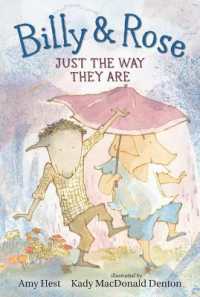- ホーム
- > 洋書
- > 英文書
- > History / World
Full Description
This is the first volume charting the CAU's on-going Barleycroft Farm/Over investigations, which now encompasses almost twenty years of fieldwork across both banks of the River Great Ouse at its junction with the Fen. Amongst the project's main directives is the status of a major river in prehistory - when a communication corridor and when a divide? Accordingly, a key component throughout has been the documentation of the lower Ouse's complex palaeoenvironmental history, and a delta-like wet landscape dotted with mid-stream islands has been mapped.
This book is specifically concerned with the length of The Over Narrows, whose naming alludes to an extraordinary series of mid-channel 'river race' ridges. With their excavation generating vast artefact sets and unique palaeo-economic data, these ridges saw intense settlement sequences, ranging from Mesolithic camps, Grooved Ware, Beaker and Collared Urn pit clusters (plus field plots) to Middle Bronze fieldsystems and their attendant settlements, a massive Late Bronze Age midden complex and, finally, an Iron Age shrine. The latter involved extensive human bone or body-part deposition and bird sacrifice. Four upstanding turf barrows and two accompanying waterlogged pond barrows feature among the main excavations reported here. With more than 40 cremations (including in situ pyres), the resultant detailing of Early Bronze Age mortuary practices and the insights into the period's monument construction are ground-breaking.
This is an important book, for the scale of The Narrows' excavations and palaeoenvironmental studies, its comprehensive dating programmes and, particularly, the innovative methodologies and analyses undertaken. Indeed, a commitment to experiment has lain at the project's core.








